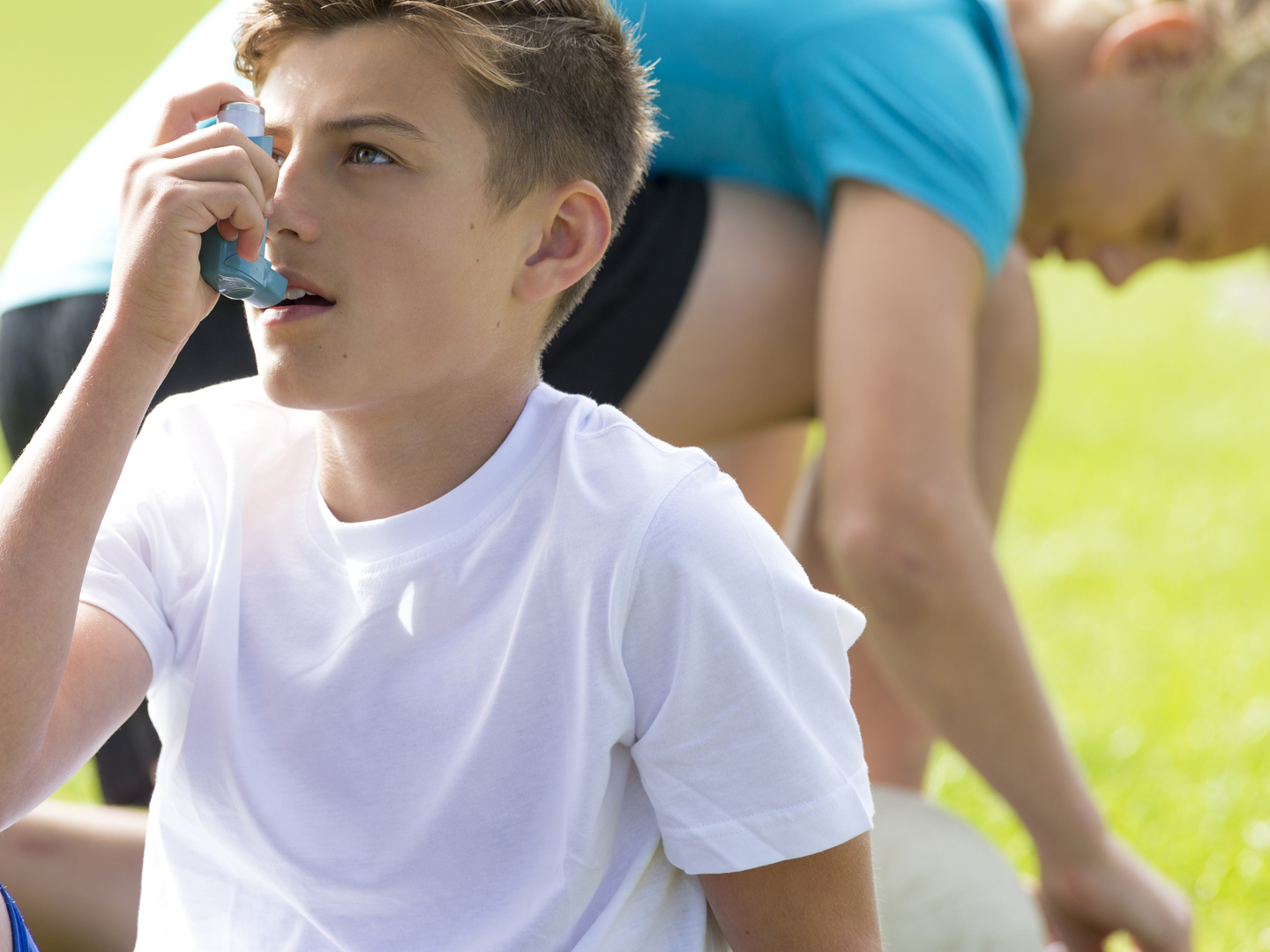
Key facts
- Having asthma is not a reason for children to avoid exercise.
- Some people experience asthma symptoms after vigorous exercise. This is known as exercise induced asthma or exercise induced bronchoconstriction.
- Symptoms of exercise induced asthma usually start about 5 to 10 minutes after vigorous exercise.
- Make sure your child always has their reliever puffer with them. It’s important that your child and any supervising adults know how and when to use it.
- Your child’s asthma action plan should contain information about preventing and responding to exercise induced asthma. Keep the plan with your child when they exercise.
Should children with asthma play sport?
Yes. Having asthma is not a reason for children to avoid exercise. It is important that children who have asthma continue to exercise to help them stay fit and healthy.
What is exercise induced asthma?
Some people experience asthma symptoms after vigorous exercise. This is called exercise induced asthma or exercised induced bronchoconstriction.
It occurs when the airways in the lung cool down and dry out after heavy breathing. This causes the small airways to become inflamed, swollen, and blocked by mucus, and can make it difficult to breathe. It can also be triggered by exercising where there is pollution or pollen in the air, or by viruses.
Exercise induced asthma can happen to anyone, whether you have asthma or not. About 1 in 4 school children experience exercise induced asthma. If you have asthma, exercise can be one of your triggers. Having symptoms after exercising might mean that your asthma is not properly controlled, and that you should see your doctor.
What are the symptoms of exercise induced asthma?
Symptoms of exercise induced asthma often appear 5 to 10 minutes after your child has stopped exercising. After an asthma attack, symptoms may not appear again for 2 or 3 hours, even if your child does more exercise.
Symptoms include:
- coughing
- wheezing
- tightness in the chest
- breathlessness
- producing a lot of mucus
How is exercise induced asthma diagnosed?
If you think your child might have exercise induced asthma, see your doctor.
Your doctor will ask about your child’s symptoms and perform a physical examination. The doctor may also arrange tests such as spirometry (lung function tests) and refer you to a specialist respiratory (lung) doctor. You may need spirometry to confirm a diagnosis of exercise induced asthma.
How can my child manage their asthma while playing sport?
Here are some strategies to manage exercise induced asthma:
- Tell your child to take their reliever puffer 15 minutes before warming up, if this is part of their asthma action plan.
- Make sure they warm up before exercising.
- Watch for asthma symptoms during exercise and give your child their reliever puffer if symptoms appear. They should return to exercise only when the symptoms have stopped. If symptoms reappear, give them more reliever and don’t let them return to exercise.
- Remember that asthma symptoms can occur up to 30 minutes after your child has stopped exercising. Have the reliever medicine readily available.
Children can forget to take their medicine with them — make sure you remind them. If they are old enough, teach them to always pack it. Remember to tell any adults who are supervising the activity that your child has asthma and has an asthma action plan.
It is important to use the asthma puffer correctly to get the full benefit of the medicine. Your doctor or pharmacist can check your inhaler technique and see that your child is getting the most out of their asthma medicine.
If your child does not respond to their reliever puffer after 4 minutes, they may be having a severe asthma attack, and you should:
- Sit your child down comfortably and reassure them.
- Give them another 4 puffs of reliever medicine, preferably through a spacer.
- If there is still no improvement after 4 minutes, call an ambulance immediately.
- Keep giving 4 puffs of reliever every 4 minutes until the ambulance arrives. Children should not have more reliever than this.
Every child with asthma should have a written asthma action plan. This contains information on how to recognise asthma symptoms and how to manage them.
Your doctor will develop the asthma action plan with you. Tell your doctor if your child will be playing sport so they can include relevant information in the asthma action plan.
Tell your child’s coach or trainer about the child’s asthma and give them a copy of the asthma action plan so they know what to do if your child develops symptoms.
Your child’s asthma action plan should be reviewed by your doctor at least every 6 months.




